
By James Connors, Web Coordinator NOAA Office of Ocean Exploration and Research
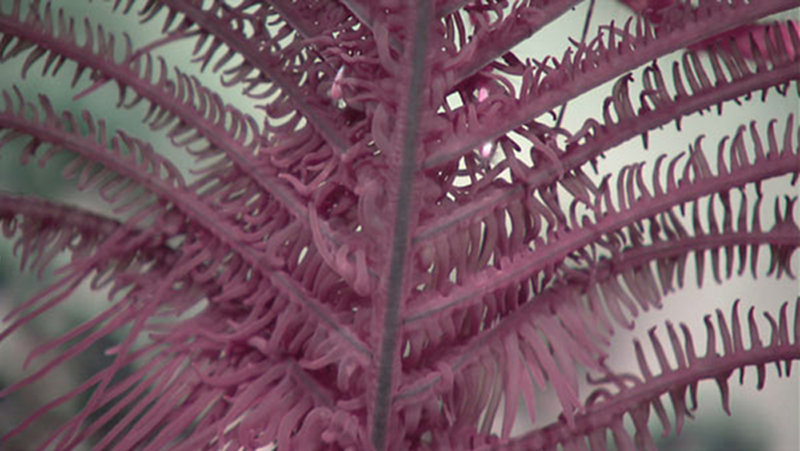
This black coral, in addition to the two galatheid crabs weighing it down, possessed strange tendrils hanging in the water column, seemingly wrapped around its stalk. Image courtesy of NOAA Office of Ocean Exploration and Research. Download larger version (jpg, 1.3 MB).
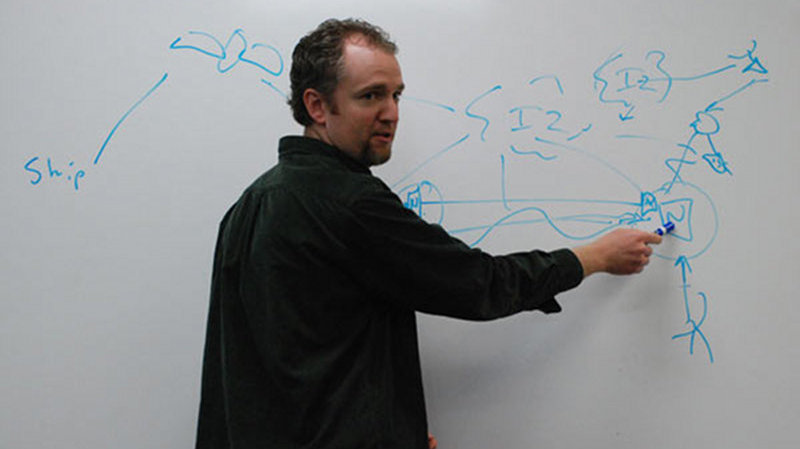
EX Program Manager Craig Russell explains the data path necessary for video and audio from the Okeanos Explorer to reach the ECCs in real time. Image courtesy of NOAA Office of Ocean Exploration and Research. Download larger version (jpg, 3.6 MB).
Despite the great advice given from many in the office about what to expect as web coordinator, no one could have prepared me for the marathon first day of ROV operations. Due to the aforementioned issues with the ship’s VSAT that put a telepresence-enabled ROV leg in jeopardy, the concept of having scientists on shore at ECCs working with the ship’s crew to direct dives was, to put it mildly, an uncertainty. Travel was put on hold, and lives thrown into a holding pattern, as the Telepresence team onboard the ship worked around the clock with satellite communications experts to repair hardware and software issues with the VSAT. As of Tuesday, July 12th, the team was able to secure a live feed from the Okeanos, and plans were back on for scientists around the country to be at work with the ship for the remainder of the expedition. Though this was certainly the outcome everyone was hoping for, participants traveling from the East Coast to NOAA’s Pacific Marine Environmental Laboratory found themselves suddenly thrust into a maelstrom: flying across the country all day in order to reach Seattle in time for the ship’s first ROV dive, which had been delayed to roughly midnight local time.
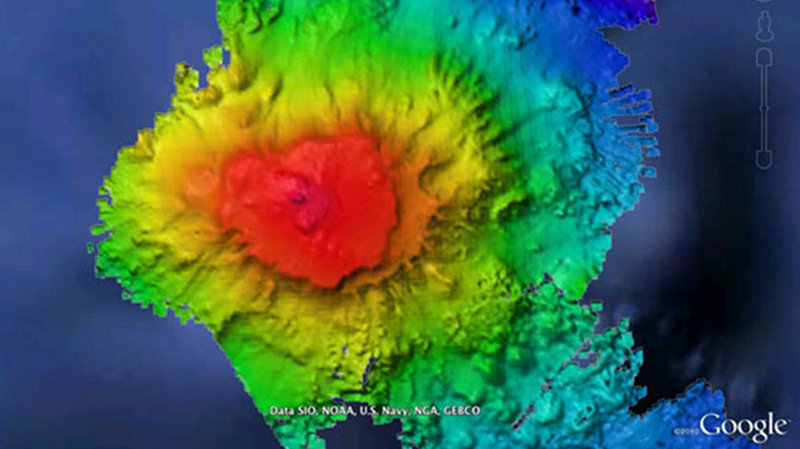
EM302 multibeam sonar data overlaid in Google Earth, showing the particular seamount in the Paramount chain where the dive was conducted. Image courtesy of NOAA Office of Ocean Exploration and Research. Download larger version (jpg, 1.9 MB).
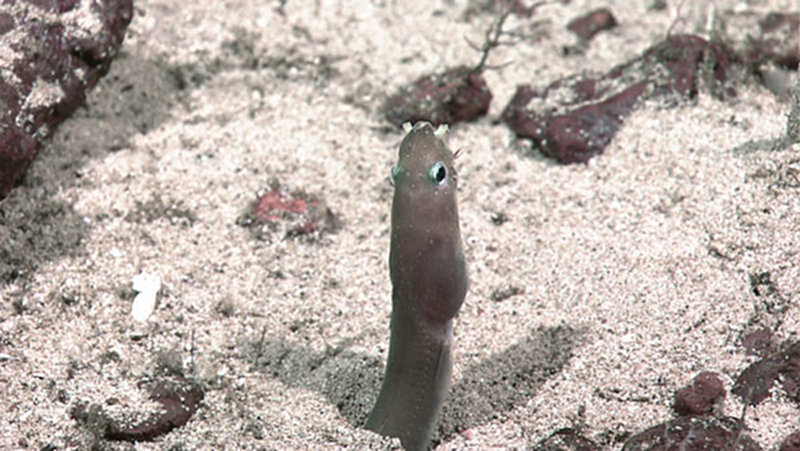
An unidentified species of eel peeks up at the ROV from its hole in the seafloor sand. Image courtesy of NOAA Office of Ocean Exploration and Research. Download larger version (jpg, 1.6 MB).
After the coast-to-coast flight (complete with layover in LA), rental car acquisition, hotel check-in, a quick dinner, and maybe 90 minutes of sleep, it was time to head to work. The contingent of Professor Jim Holden (UMass Amherst), his grad students Lucy Stewart and Jennifer Lin, EX Deputy Program Manager Nicky VerPlanck, and I met OER Chief Scientist Steve Hammond at the entrance to the darkened lab. We were led to a nondescript, high-ceilinged room dominated by six large screens and an RTS audio unit at one end. Within about a minute, everyone in the room had whipped out a laptop and connected the Eventlog, essentially a chat room for information sharing and species identification that can later be culled for data connected with a specific time in the dive. Our view of the ROV launch off the deck of the EX told us that we had about 30 minutes until the real show began—the time it would take for Little Hercules and Seirios to descend the roughly 500 meters to the peaks of the Paramount Seamounts.
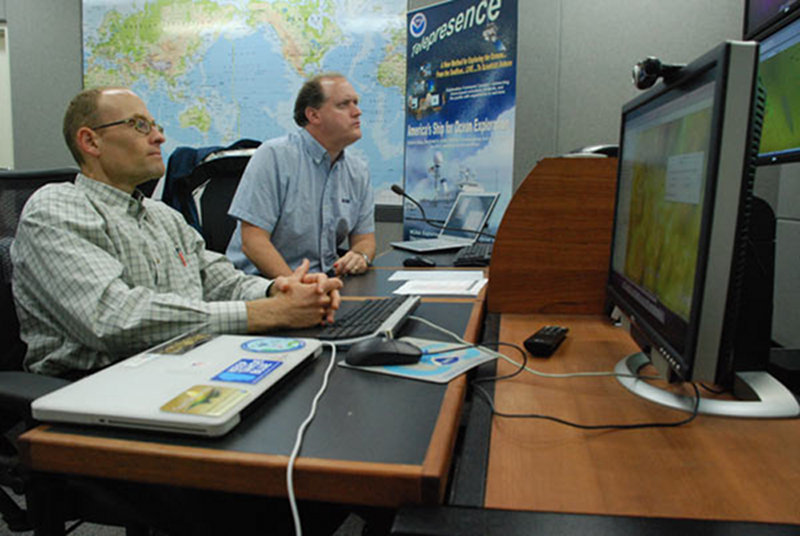
Scientists Scott White (left) and Jim Holden (right) observe the video feed from Little Hercules and record their observations in the Eventlog. Image courtesy of NOAA Office of Ocean Exploration and Research. Download larger version (jpg, 5.3 MB).
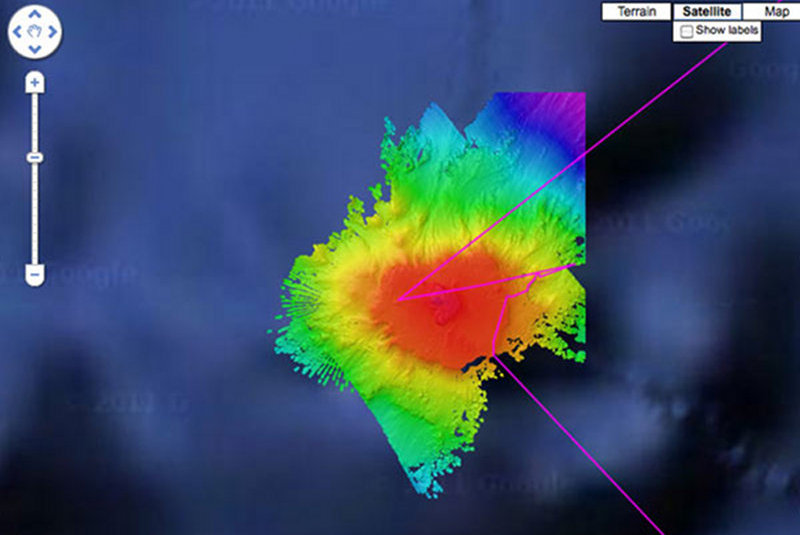
Okeanos Explorer digital atlas frame grab showing the ship’s track over the seamount. The science team sought to cling to the edges, where they anticipated coral concentration to be highest. Image courtesy of NOAA Office of Ocean Exploration and Research. Download larger version (jpg, 362 KB).
Upon reaching the seafloor, onlookers at the ECCs around the country were immediately greeted with a stunning biological community. The never-before-seen seamounts were dotted with various species of deepwater corals, which in turn provide a home for anemones, brittle stars, squat lobsters, and shrimp. Sessile fish and burrowing eels were also found throughout the area, waiting to gulp up any edible creature swimming past. Some unexpected sights included a hammerhead shark lurking around Seirios, and a black coral with strange tendrils dangling from its stalk. The entire dive was masterfully orchestrated from the ship by Science Team Lead Tim Shank, who serves as the conduit between the ROV operators and the science team on shore. Hearing his continued excitement at the unfamiliar species and unique ecological relations unfolding before our eyes helped stave off the exhaustion we were all feeling in Seattle. At approximately 4 a.m. we received a crucial energy boost in the form of granola bars, pistachios, and chocolate from OER Deputy Director John McDonough and EX Program Manager Craig Russell, who stayed to enjoy the remainder of the dive with us. Little Herc and Seirios were brought back to the surface at around 9:00am, effectively bringing to an end my first day as web coordinator, one of the longest and most unique that I can remember.